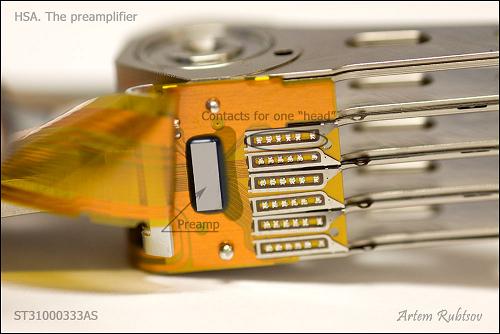When you say it "is not detected", where are you looking? There are two places to look at a lower level to determine whether there is any good function.
1. Boot up and go into BIOS Setup. Check what HDD units are detected and appear to be identified properly with their names and sizes. Is the troubled drive there apparently OK? IF it appears properly there, you should be able so see more with the next step.
2. Finish booting into Windows and use Disk Management. If you're not familiar, click Start at lower left, then RIGHT-click on My Computer and choose Manage; then choose Disk Management. It has two windows on the right. The upper one shows you all the storage devices Windows can use right now. Concentrate on the LOWER RIGHT pane which has all the hardware storage devices, even those Windows does not yet understand. This pane SCROLLS so you can see all it has. Look there for your troubled drive. If it was detected in the BIOS, it should show up there.
In that Lower Right pane, each storage unit is represented by a horizontal box. In each box on the left end is a name liked "DISK 0", a type like "Basic", a size in GB, and a status. The main part of the box is composed of one or more sub-blocks, each representing one Partition on the device. (An optical drive won't quite look this way.) A Partition is treated by Windows as one "drive" with its own letter name. Some HDD's will have only one such sub-block, but some may have more (and hence more than one "drive" on a HDD unit). Some MAY have a block at the right end labelled "Unallocated Space".
For each block representing a Partition on one HDD unit, there will be further info in the block: a disk name assigned when it was Formatted, like "MyDrive", the letter name Windows uses for it like C: , a size in GB followed by the File System (usually NTFS), and finally a status like "Healthy".
There are three common problems one sees here. The first is that there are no Partitions defined, and the entire space of the HDD is "Unallocated Space". This is always the state of a brand new empty HDD, and it can happen to a used HDD if the Partitions on it are Deleted.
The second problem is no letter name at the end of the first line with the Partition's name. If that is your situation and the rest of the info looks perfectly OK, there is an easy fix. You RIGHT-click on that Partition and choose to change or assign a letter name. If you do that, back out of Disk Management and reboot so Windows can update its Registry, then check My Computer for your drive.
The third problem is that the File system is not "NTFS" or "FAT32", but is shown as "RAW". If that is what you see, what it really means is that some bit of data in the HDD's structure records is corrupt so that Windows can't figure it out, BUT your data are very likely all there. You can get and use some Data Recovery software to get your data back. Most tools to do this actually need to COPY all the data to another good HDD so that it does not risk damage to the troubled HDD by actually trying to write on it. But this means that you need (at least temporarily) a spare HDD big enough to hold the recovered data.
So, post back here what you find:
Does it show in BIOS Setup?
Does it show in the LOWER RIGHT pane of Disk Management?
Can you identify anything in the Disk Management display that seems wrong?



